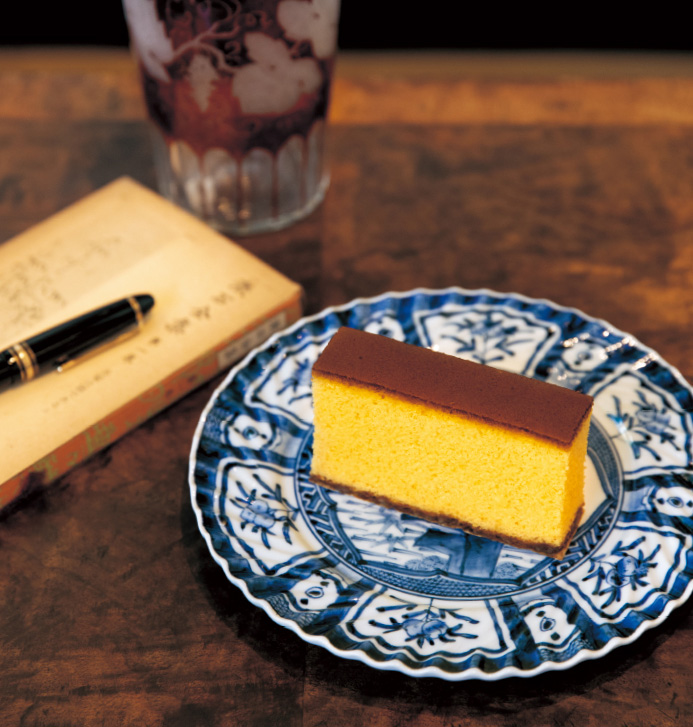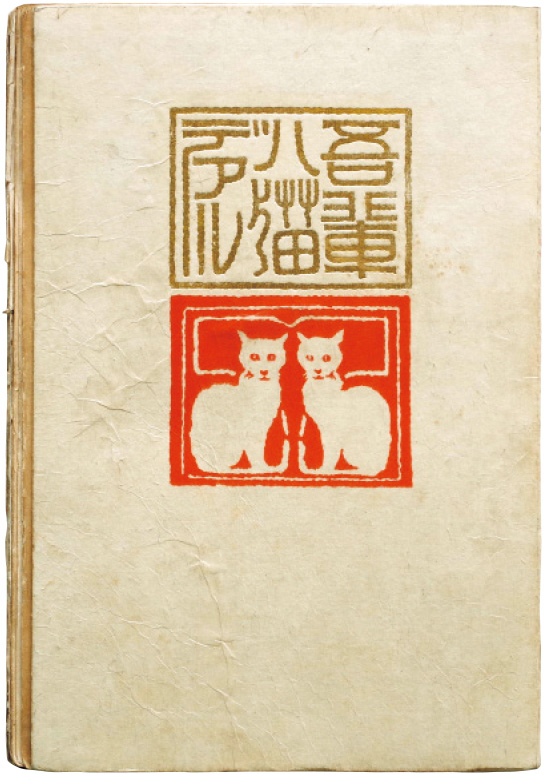
2022 NO.33
Menu
 Tasty Japan: Time to Eat!
Tasty Japan: Time to Eat!

Castella
A Baked Confection Born in a Port Town
and Loved by a Literary Giant
Photos: Arai Akiko

The great writer Natsume Soseki enjoyed castella. This sponge cake-like confection has a deep sweetness and moist, bouncy texture.
Castella, a sponge-cake-like confection made with flour, eggs, and sugar, is baked in a square mold and generally sold in boxes, cut into about 3-cm wide slices for eating. Castella originated in Nagasaki Prefecture in Japan’s Kyushu region. Situated at the western tip of the country, Nagasaki opened as a trading port in the late 16th century and remained the only gateway for trade during the Tokugawa shogunate when foreign traffic and trade were restricted.
Although this delicate cake is said to have come from a confection introduced by Portuguese missionaries around the 16th century, there is actually no Portuguese sweet called “castella.” Some trace its origins to Portugal’s pão de ló, and others to bizcocho from Spain. Whatever the case, castella has been baked in Nagasaki since the 1620s, and from there it spread to the rest of Japan.
One literary figure closely associated with castella is Natsume Soseki (1867–1916), the author known as the father of modernism in Japanese literature. Born when Japan was beginning to move forward as a modern nation, Soseki’s works reflect the conflicts inherent to the rapid westernization of Japan. Apparently, Soseki had a real sweet tooth, and castella features in several of his novels. His masterpiece, I Am a Cat (Wagahai wa Neko de Aru), features a humorous scene written from the cat’s point of view of a young guest who secretly gobbles up a slice of castella while the master of the house is away from the table.
Soseki even writes in his diary about receiving castella as a gift during a visit with a friend in Kyoto:
Peering up at the five-storied pagoda against the warm spring sky,
Wandering with a heart, and a pocket, full of castella.
This diary entry conjures up a sweetly comical image of Soseki cradling his favorite treat as he walks the streets of the ancient capital, which is bound to bring a smile.
Nakagawa Yasuhide, the president of Bunmeido Sohonten, a confectionary shop with a long history in Nagasaki, says that the traditional cake did not taste the way it does today until the late 19th century, when sweet mizuame syrup was added to the ingredients. “Adding syrup makes the batter moist. Japanese people tend to dislike a dry texture. By adding mizuame, castella, a sweet that we adapted from Europe, became a Japanese confection,” he says. To ensure moistness, the batter is stirred several times, even during baking. This allows the cake to cook evenly and have a moister texture.
Still a common gift and souvenir in Japan today, castella has remained consistently popular despite the usual booms and busts in popularity that most sweets endure. Confections and literature imbued with historical crossroads never grow old and will continue to fascinate the people of Japan.
I Am a Cat (Wagahai wa Neko de Aru) is a humorous novel featuring a black cat as the main character, who narrates stories about his family of owners and the people around them. It was originally published in 1905. (Collection: Natsume Soseki Memorial Museum)






